Announcements
Drinks

Post-crisis European Banking Landscape: Safer Banks But Greater Risk Exposure for Investors
The new regulatory architecture is now mostly in place and it is time to assess what it means for banks but also for investors. The main lesson is that there will be no return to the pre-2008 bailout world. In light of this, Scope Ratings believes that credit investors will have to be as proactive and forward-looking as equity investors, since their downside risk is more real than in the old “too-big-to-fail” environment.
Scope Ratings highlights six key trends in today’s 2015 Banking Outlook report:
Stronger balance sheets with ampler and better-quality liquidity and capital levels and more balanced funding
Overall, the efforts to comply with the new regulatory prudential standards and to de-risk and deleverage have produced stronger balance sheets for the large European banks. They now have lower loan-deposit ratios, lower asset-risk intensity, higher regulatory capital levels and improved leverage. Scope Ratings also highlights the much improved quality and mix of both capital and liquidity.
Scope believes that the metrics of safety will be preserved in 2015 although it is likely that balance sheets will start growing again, especially from Q2 onward if the economic situation begins to improve and new lending rises.
Asset quality indicators will remain a mixed bag, but credit metrics should improve in some vulnerable countries
Scope Ratings notes material differences in asset quality metrics between vulnerable and core countries’ banks. Sorting out the crisis legacy remains an uneven process. In Italy, for example, the legal system makes it very difficult to resolve non-performing loan situations in an economically acceptable timeframe.
On balance Scope believes that banks in Ireland, Spain or Portugal will be able to sort out their impaired loans faster than banks in Italy or Greece. The ECB has righty flagged difficult legal enforcement regimes like in Italy as a hurdle in asset-quality legacy cleanup by local banks.
Sluggish earnings and weak returns to persist in the coming year
The difficult macro situation across Europe continues to be the main driver of banks’ overall modest performance. On aggregate, bank revenues are a mix of net margins and volumes, both still at depressed levels and not likely to improve visibly – at least not until EU economies pick up, at best in 2H 2015.
Scope expects banks to continue to cut costs and pursue better efficiency to improve profitability. However the cost of taking on board compliance and regulatory affairs staff is increasing exponentially – a trend that is not likely to reverse itself anytime soon. Banks are also investing considerably in IT infrastructure for current needs and the multichannel strategy they increasingly embrace.
Scope believes, however, that next year profitability levels may be somewhat helped by lower levels of loan-loss provisions, although the positive effect is not likely to be spectacular.
Overall, banks will have to learn to live with mid-high single-digit or at best low double-digit ROEs, not only because pretax earnings are a fraction of their pre-crisis levels, but because the equity base is a multiple of pre-crisis levels as well.
Lending growth remains uncertain
Despite the political and regulatory discourse about banks not being sufficiently committed to lending to the real economy across the EU, Scope sees the more modest credit demand from both businesses and individuals as the main cause of relatively reduced new lending.
Scope believes that in 2015 bank lending will grow modestly, especially if after Q1, and more likely in H2, economic conditions improve. The ECB’s survey of the euro area shows that while credit standards remain tight demand has started to inch up – a trend likely to continue in 2015.
Significant increase in MREL funding
Scope Ratings expects a significant increase in MREL funding (minimum requirements for eligible liabilities), primarily in the form of subordinated debt and possibly senior unsecured debt issued by holding companies or, alternatively, by earmarked funding vehicles with a parent bank guarantee possibly referring to contractually bailinable securities.
As the report highlights, there is a material gap in terms of MREL liabilities, which may need to be filled during the next two years or so. Issuance of AT1 and T2 securities is likely to go far beyond the levels reached so far in 2014.
Benefitting from a belated green light from policymakers, Scope also expects securitization to resume on a larger scale, probably focusing on business loan collateral rather than mostly on mortgages as was the case before the crisis. The ECB’s ABS purchase program represents a powerful attraction for new securitization deals, which should materialize in the near future.
More M&A activity in 2015
As they tried to keep pace with regulatory changes and the uncertain environment of the past years, banks refrained from engaging in cross-border interbank activities. Scope believes this will change in 2015. First, there is more clarity on capital needs and asset valuations following the Comprehensive Assessment. Second, and very importantly, the Single Supervisory Mechanism (SSM) seems to be encouraging more consolidation to offset the harmful impact of systemic fragmentation and thus to encourage more lending to the real economy within the euro area.
Scope’s bank ratings reflect the post-crisis characteristics
This year Scope has assigned its first bank ratings, based entirely on its post-crisis resolution-based methodology (rather than rating banks based on increasingly unlikely state support). Scope currently rate and assess publicly 24 banking groups in 11 European countries, amounting to nearly two-thirds of the continent’s aggregated bank assets. The rating range includes long-term and short-term debt as well as capital securities (AT1 and Tier 2).






